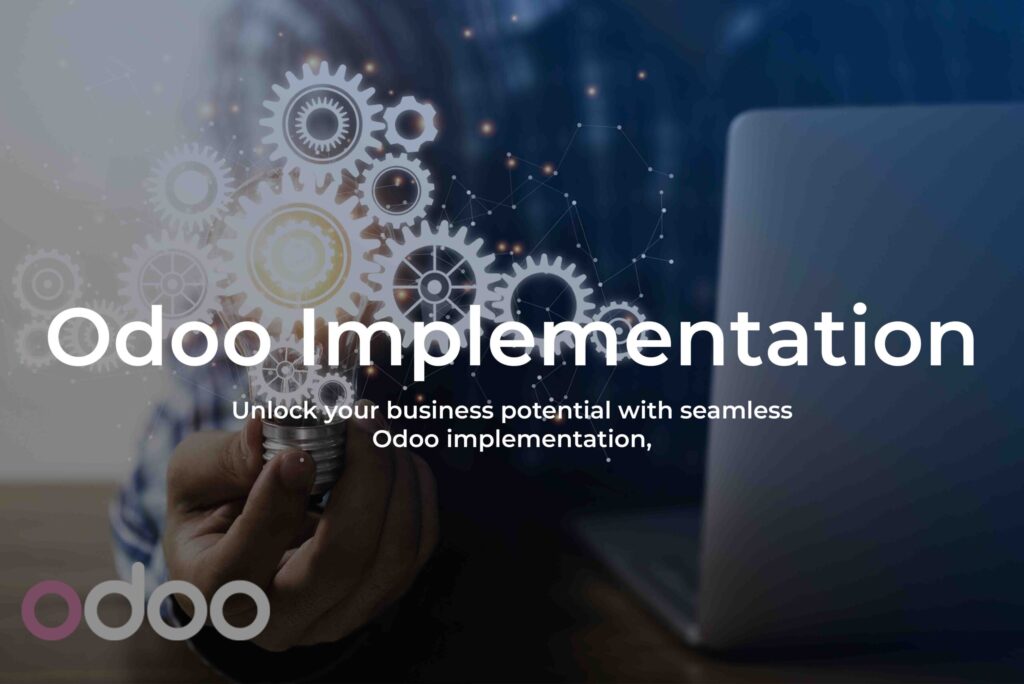Implementing an ERP (Enterprise Resource Planning) system is a significant milestone for any business looking to improve its internal processes and enhance efficiency. Among the many ERP solutions available, Odoo stands out due to its flexibility, cost-effectiveness, and modular nature. Whether you are a small startup or a large enterprise, Odoo provides a comprehensive suite of business applications that can be tailored to suit your needs. However, for a successful deployment, careful planning, and execution are essential.
In this article, we will walk you through a comprehensive guide to Odoo Implementation, covering the essential steps and best practices to ensure a smooth integration process.
Why Choose Odoo for Your ERP Implementation?
Odoo is an open-source ERP platform that offers a wide range of applications, including modules for sales, accounting, inventory, manufacturing, human resources, customer relationship management (CRM), and more. It is known for its:
1. Modularity and Customization
Odoo’s modular approach allows businesses to implement only the modules they need, making it scalable and customizable. As your business grows, additional modules can be added without disrupting existing processes.
2. Cost-Effectiveness
Unlike many traditional ERP systems that come with high licensing and implementation costs, Odoo is an affordable solution. The community edition is open-source, and even the enterprise edition remains reasonably priced when compared to other ERP platforms.
3. User-Friendly Interface
Odoo is designed with a clean, intuitive interface that makes it easy for users to adopt. It requires minimal training for employees to start using the system effectively, which can significantly reduce the transition time.
Key Steps for a Successful Odoo ERP Implementation
Implementing Odoo ERP can be a smooth and efficient process if executed correctly. Below are the essential steps to guide you through the implementation journey.
1. Define Clear Objectives and Requirements
The first step in any ERP implementation is to clearly define your business objectives. What specific challenges are you trying to address? Which processes do you need to automate or improve? Engage with different departments within your organization (sales, finance, HR, etc.) to understand their pain points and requirements. This will help you prioritize which Odoo modules are necessary.
2. Choose the Right Odoo Version
Odoo offers two main versions:
- Community Edition: Open-source and free, suitable for small businesses with basic ERP needs.
- Enterprise Edition: Paid version with additional features, such as advanced reporting, mobile access, and premium support. This version is better suited for larger companies with more complex requirements.
Choosing the right version depends on your business size, budget, and desired features. Businesses can start with the Community Edition and later upgrade to the Enterprise Edition as their needs evolve.
3. Work with an Experienced Odoo Implementation Partner
Odoo is highly customizable, and a successful implementation depends on how well the system is tailored to your business processes. Partnering with an experienced Odoo consultant or implementation partner is essential. A reliable partner can guide you through the entire process, from module selection to data migration, configuration, and post-implementation support.
Index World, a leading Odoo implementation partner, can help ensure your deployment is tailored to your unique business needs. With expertise in various industries, Index World specializes in configuring Odoo to maximize efficiency and streamline your business operations. Their team can provide valuable insights into customization, integrations, and even ongoing support post-implementation.
4. Data Migration and Integration
Data migration is one of the most critical aspects of an ERP implementation. Transitioning from legacy systems to Odoo requires careful planning to ensure all relevant data—such as customer records, financial information, inventory details, and employee data—are accurately transferred.
Additionally, Odoo must integrate with any existing software systems you may be using (CRM, e-commerce platforms, or third-party logistics). Working with an experienced partner like Index World ensures smooth data migration and system integration, minimizing disruptions to your business operations.
5. Customization and Configuration
One of the advantages of Odoo is its ability to be customized to suit specific business needs. During this phase, your implementation team will configure the Odoo modules based on your business processes. For example:
- Sales and CRM Modules: Customize the sales pipeline and integrate with marketing tools to manage customer relationships.
- Inventory Management: Set up automated stock tracking, reporting, and ordering based on sales data.
- Accounting and Finance: Tailor the finance module to reflect your specific chart of accounts, tax settings, and financial reporting.
Customization also involves developing specific reports, dashboards, and workflows that reflect how your organization operates. This stage ensures Odoo is aligned with your company’s requirements and not just a generic solution.
6. Training and Change Management
An ERP system is only as effective as the people using it. Proper training is essential to ensure your team can use Odoo to its full potential. Once the system is configured, invest in comprehensive training for your employees across all departments. Training should be role-specific, covering the modules and features relevant to each department.
Effective change management is also crucial during this phase. Introducing a new ERP system can cause disruption, so it’s important to manage expectations, address any resistance, and provide continuous support to ensure smooth adoption.
7. Testing and Quality Assurance
Before going live, thorough testing should be conducted to ensure that all configurations, data integrations, and workflows work as expected. Testing should include:
- Unit Testing: Test individual modules and functions.
- User Acceptance Testing (UAT): Allow end-users to test the system to ensure it meets their needs and expectations.
- System Integration Testing (SIT): Ensure that Odoo works smoothly with any third-party applications or systems.
Testing is essential to identify and resolve issues before the system is fully deployed, minimizing the risk of disruptions once the system is live.
8. Go Live and Post-Implementation Support
Once testing is complete and your team is trained, it’s time to go live. Transitioning to Odoo means that your business processes will now run on the new ERP system, so it’s important to monitor its performance and provide support to employees who may encounter difficulties.
After going live, Odoo may require minor adjustments or fine-tuning. Ongoing support from your implementation partner is essential to handle any issues that arise and make any necessary adjustments based on user feedback.
Conclusion
A successful Odoo ERP implementation can revolutionize your business by streamlining processes, improving collaboration, and providing valuable insights for better decision-making. By following the steps outlined in this guide—defining your objectives, choosing the right version, working with an experienced partner like Index World, and focusing on customization, training, and testing—you can ensure a smooth and successful implementation.
With the right approach, Odoo can become the backbone of your organization, providing the tools needed to drive growth, enhance efficiency, and improve overall business performance. Whether you are a small business or a large enterprise, Odoo’s flexibility and scalability make it a powerful ERP solution that can evolve with your business needs.


